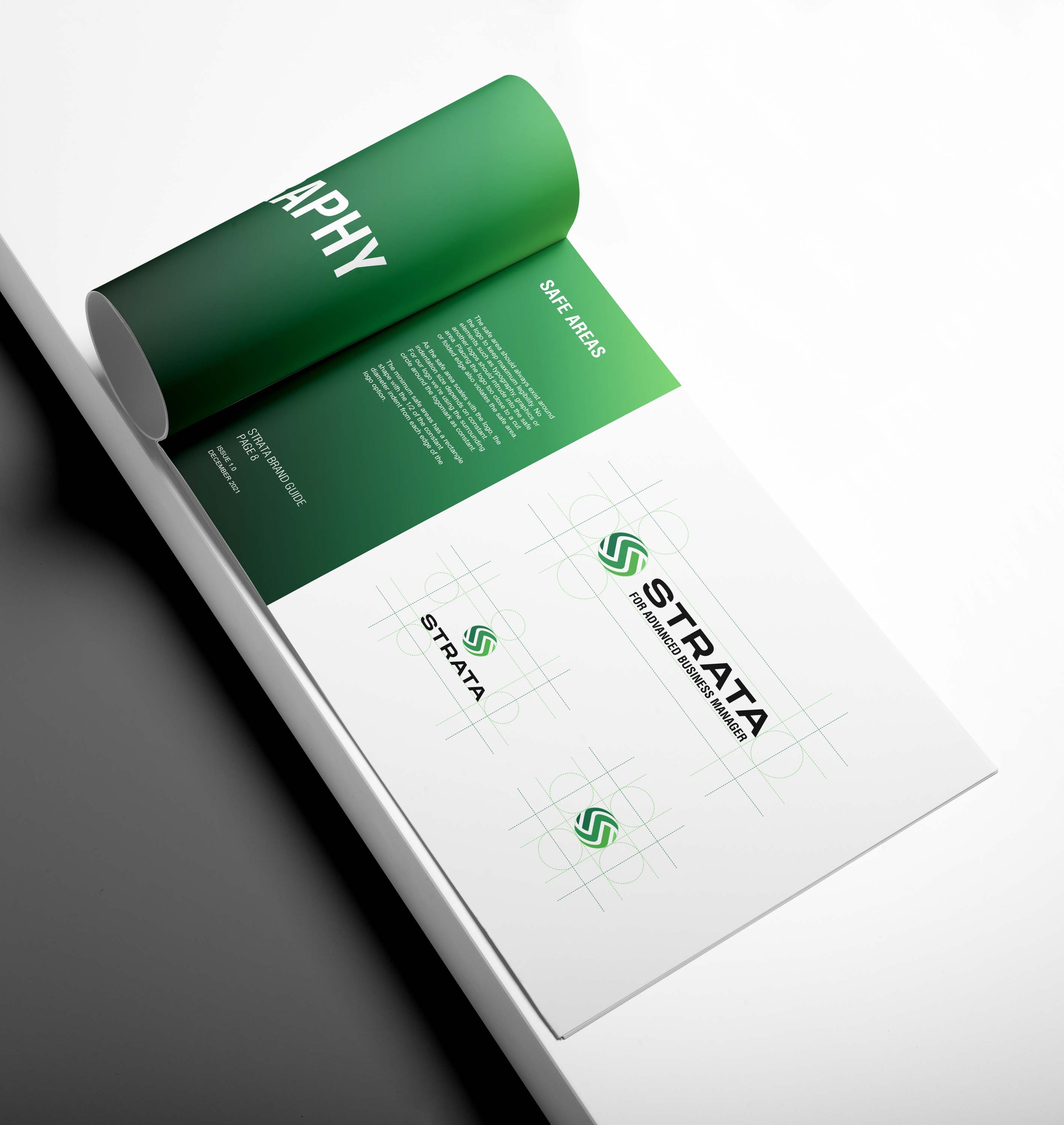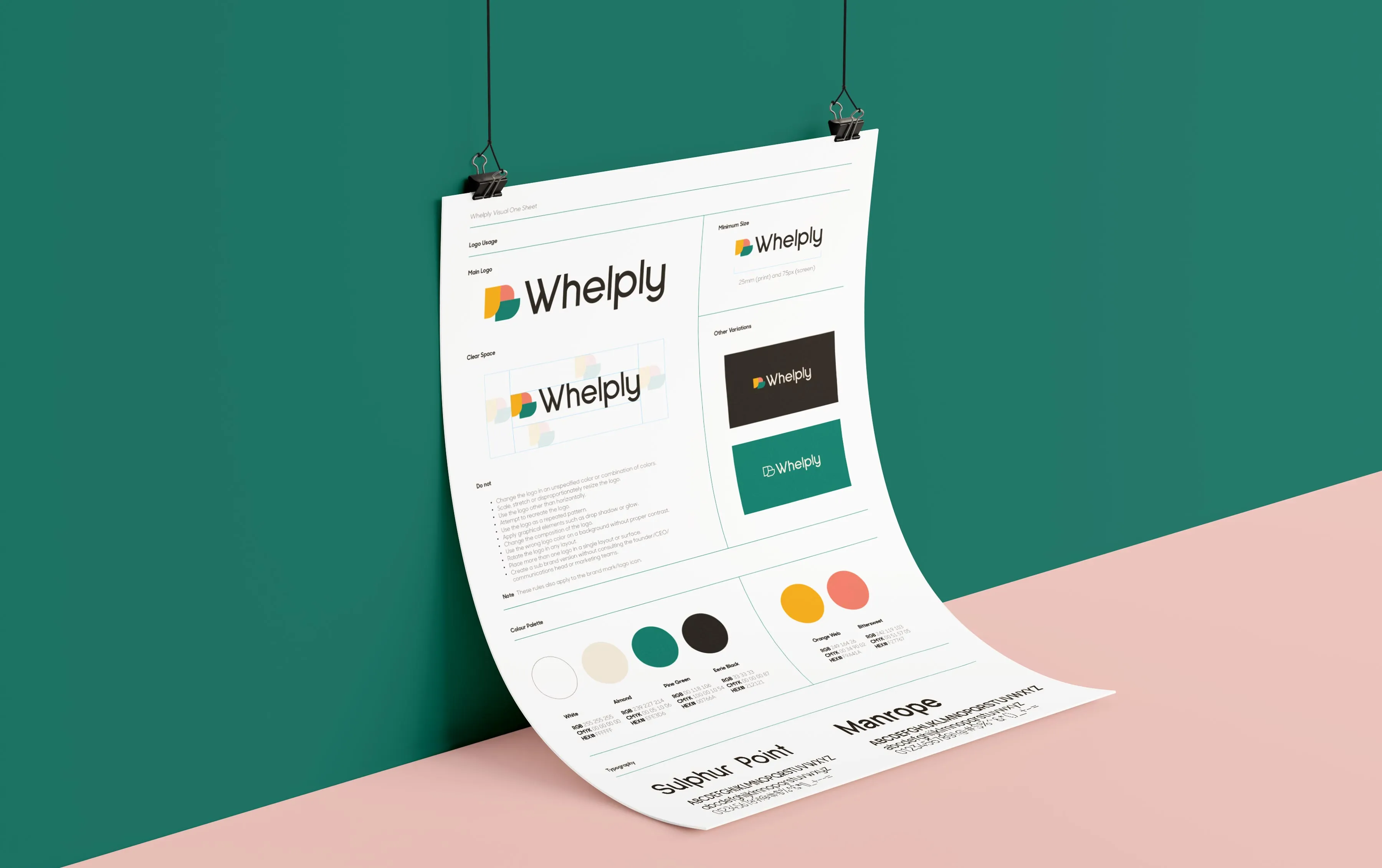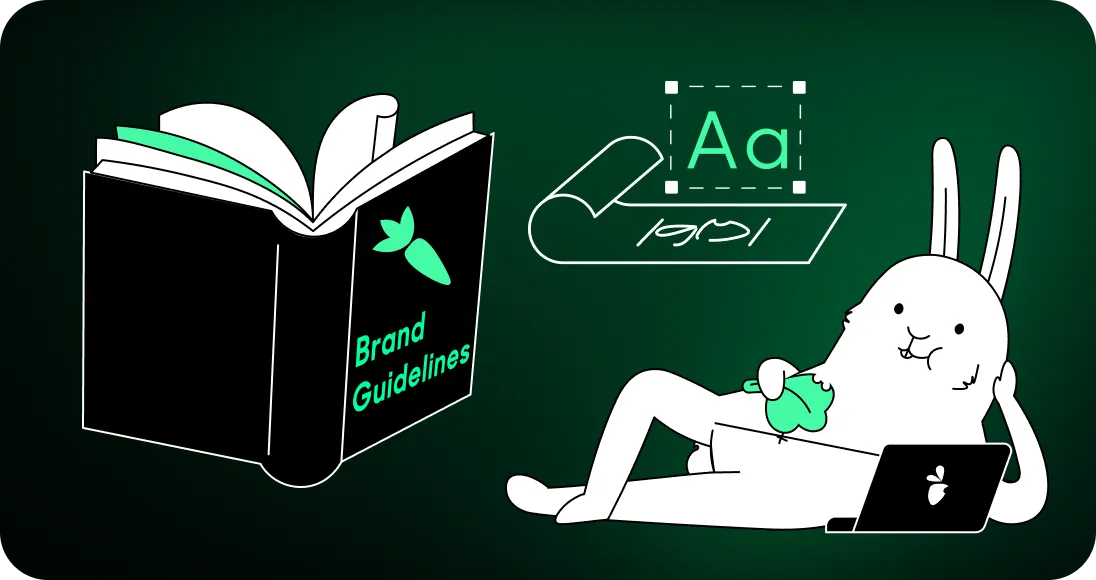Standing out in today’s crowded marketplace is about more than just having a great product or service. It’s about having a recognisable and consistent brand.
Whether you’re a small business or a multinational company, establishing and maintaining brand consistency is key to:
- Building trust
- Connecting with your audience.
- Diifferentiating from the competition
Brand guidelines, often called your “brand bible” or “Single Source of Truth,” provide a comprehensive framework for how your brand is represented visually and verbally. Consider it your go-to framework for hassle-free brand consistency, impact, and growth – whether your brand identity is managed in-house or by external suppliers.
Curious to learn more?
Great! Today, we’re diving into the nuts and bolts of brand guidelines —
- What they are…
- Why they’re crucial for your business…
- How to create effective ones that will maximise the impact of your brand identity…
…so you can build your framework for success. Let’s hop to it!
What are brand guidelines?
At their core, brand guidelines are a set of rules that outline how your brand should be presented to the world. From logo usage to typography and colour schemes, they provide specific instructions on maintaining consistency across all your branding materials.
This ensures that your brand stays on point regardless of who’s working on it—whether internal teams, marketing agencies, or third-party suppliers. Depending on your brand’s needs, these guidelines can be comprehensive multi-page documents or simplified one-sheet guides. Here’s a closer look (with examples!) of both options:
Multi-page brand guidelines
A multi-page brand guide provides a detailed breakdown of every aspect of your brand identity. It’s ideal for larger organisations or those that need to ensure consistency across multiple touchpoints.



Here are a few great examples of comprehensive, multi-page brand guidelines we’ve created:
These comprehensive brand documents cover vital elements, from basics like logo usage and colour palettes to more in-depth rules about imagery, photography, and iconography.
One-sheet brand guidelines
A one-sheet guide might be more suitable for a smaller business or if you simply need a high-level overview of your brand’s most important elements. These A4 documents typically include critical information like logo rules, primary brand colours, and approved fonts.

Here are some examples of impactful one-sheet brand guide from our burrow:
What’s included in brand guidelines?
Here’s a golden rule: no two companies’ brand guidelines should look the same. They should always be tailored to meet your unique business’s specific needs and preferences.
That said, here are some of the most common elements you can expect to find:
- Logo
This section provides detailed instructions on how to use your logo in various contexts (and how not to use it!). It may also include acceptable colour variations, spacing rules, and minimum size requirements. - Colour Palette
A breakdown of your brand’s colour scheme, including primary and secondary colours, as well as any specific Pantone or HEX codes to ensure consistency across both digital and print media. - Typography
Guidelines on which fonts should be used for headlines, body text, and callouts, ensuring that your messaging remains consistent and easy to read. - Photography, Illustration & Iconography
Rules for imagery and icons that align with your brand’s personality and values help create a cohesive visual identity. - Imagery & Usage Examples
Examples of how all the above elements work together in practice provide a visual reference for how your brand should look across various mediums.
Brand guidelines have a near-endless amount of benefits. If we had to rank our top five, they’d be:
- Consistency Across Platforms
Consistency is key to building a memorable brand, whether it’s your website, social media, or print advertising. Guidelines ensure your brand looks and feels the same, no matter where people encounter it. - Saves Time and Money
With clear guidelines, designers, marketers, and other teams don’t have to second-guess every decision, streamlining the design process, saving valuable time, and reducing costs. - Protects Your Brand Identity
Without guidelines, your brand’s identity can quickly become diluted or misrepresented. By setting clear standards, you protect the integrity of your brand across all touchpoints. - Ensures Professionalism
Consistent, well-executed branding not only looks professional but also instils confidence in your audience. It shows that your business is organised, reliable, and serious about maintaining its image. - Supports Brand Growth
As your company grows and more people work on your brand, guidelines become even more crucial. They act as a reference point that ensures your brand’s identity remains intact, even as it evolves.

At White Rabbit, we specialise in crafting multi-page and one-sheet brand guidelines that offer everything you need to maintain a strong, consistent brand identity. Whether you’re a startup looking for a streamlined approach or an established company in need of a more comprehensive solution, we’ve got you covered.
Want to learn more? Visit our Brand Guidelines page to see how we can help you build a cohesive brand identity that stands out in the market.
Conclusion
Your brand guidelines are more than just a document—they’re an investment in your business’s future.
Establishing clear rules and standards ensures that your brand remains consistent, professional, and impactful across all platforms and touchpoints.
Let us help you bring your brand to life. Contact White Rabbit today to create brand guidelines that work for your unique business.
